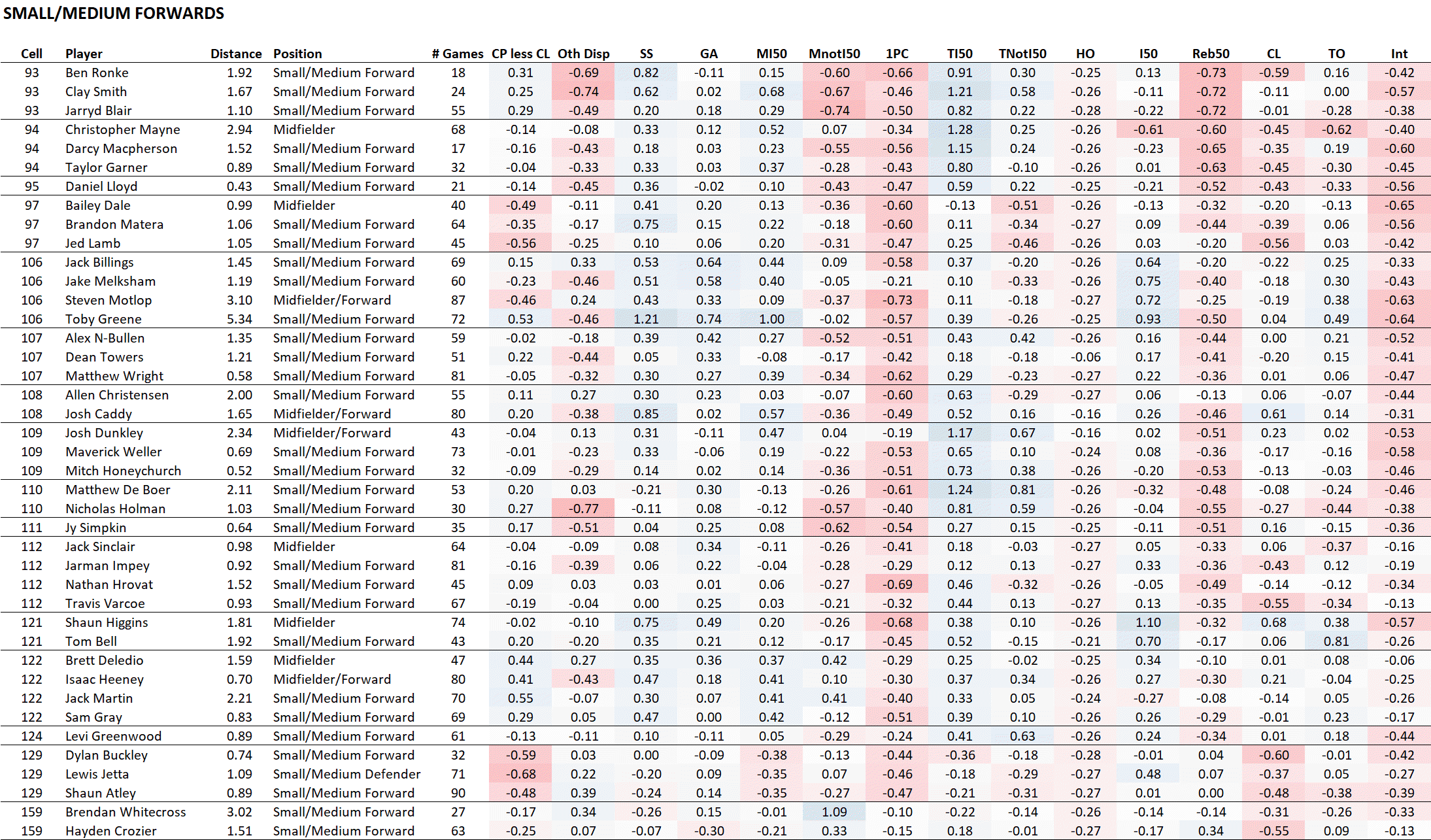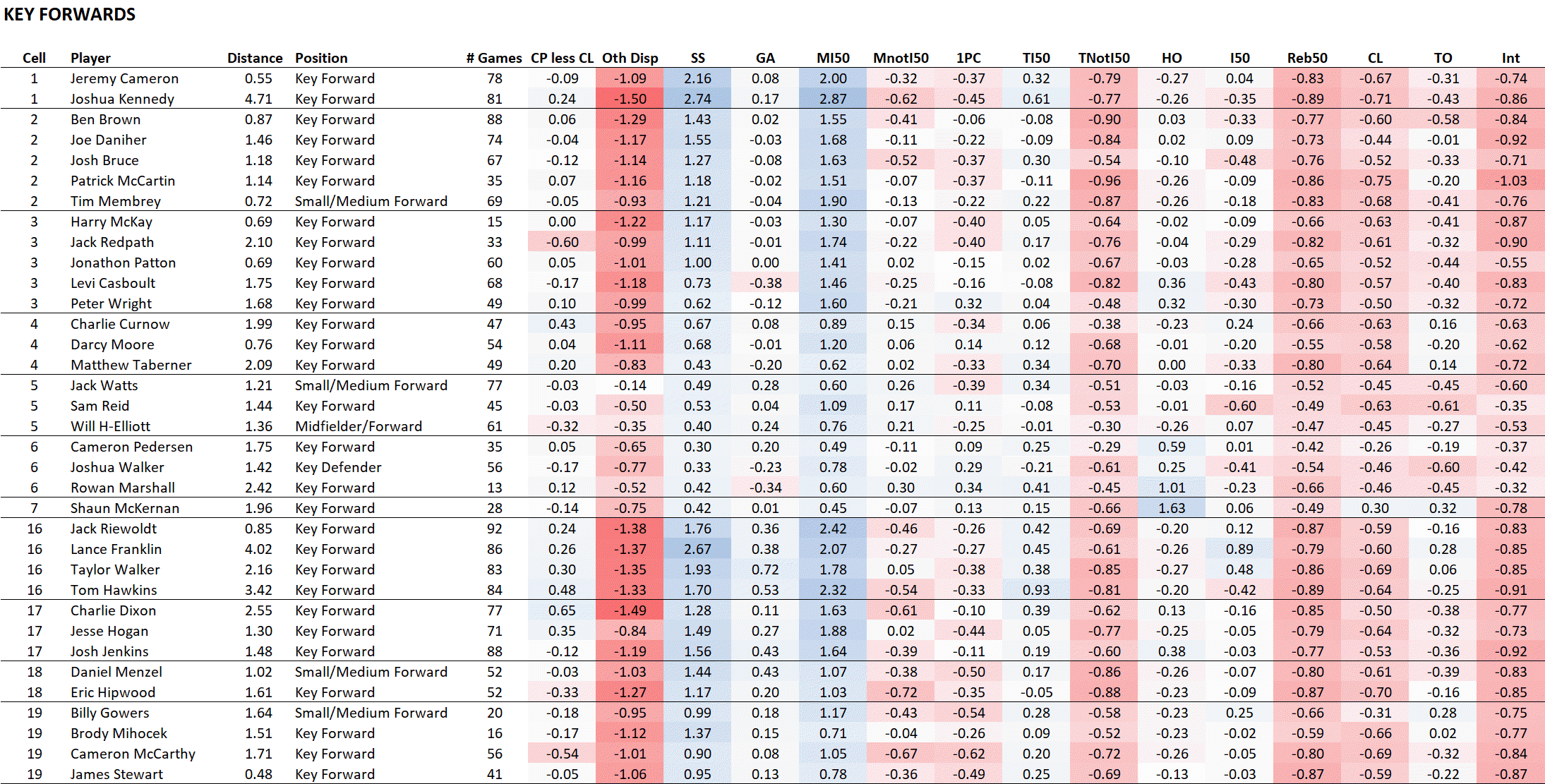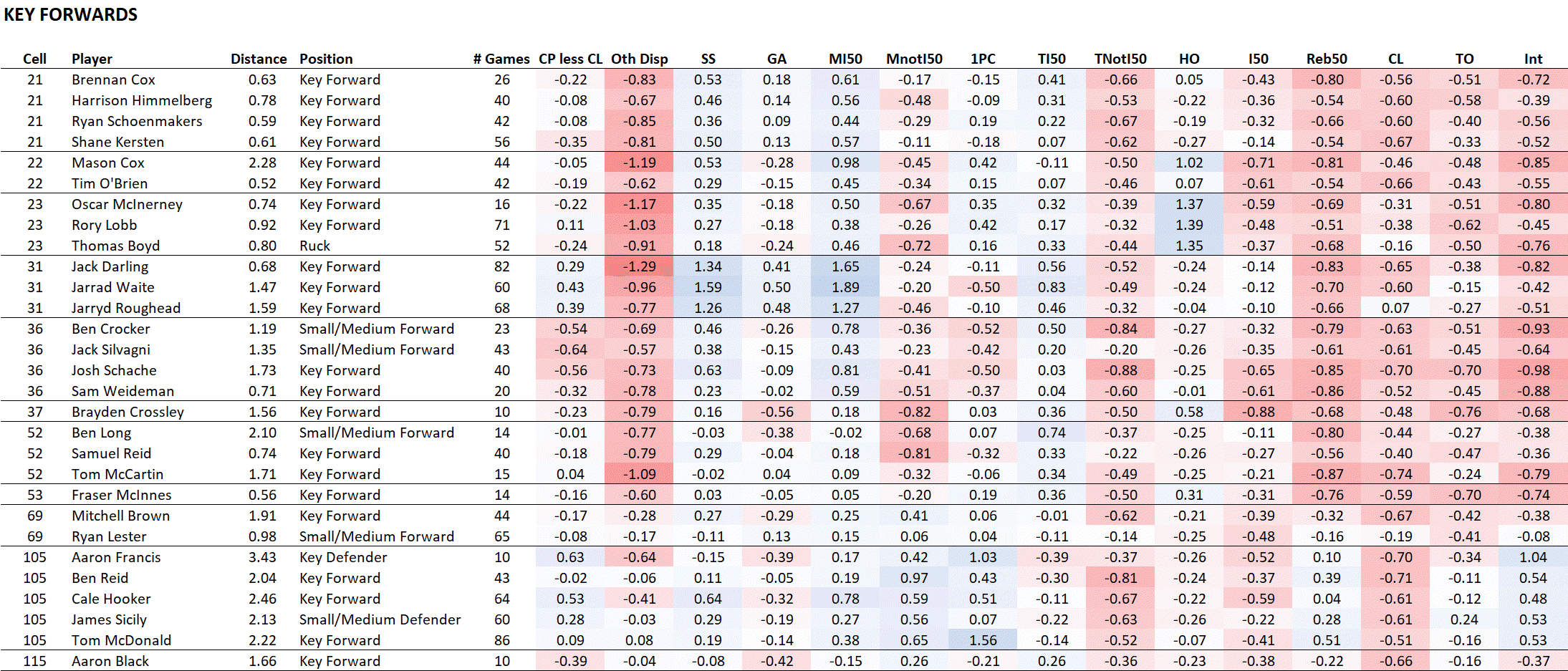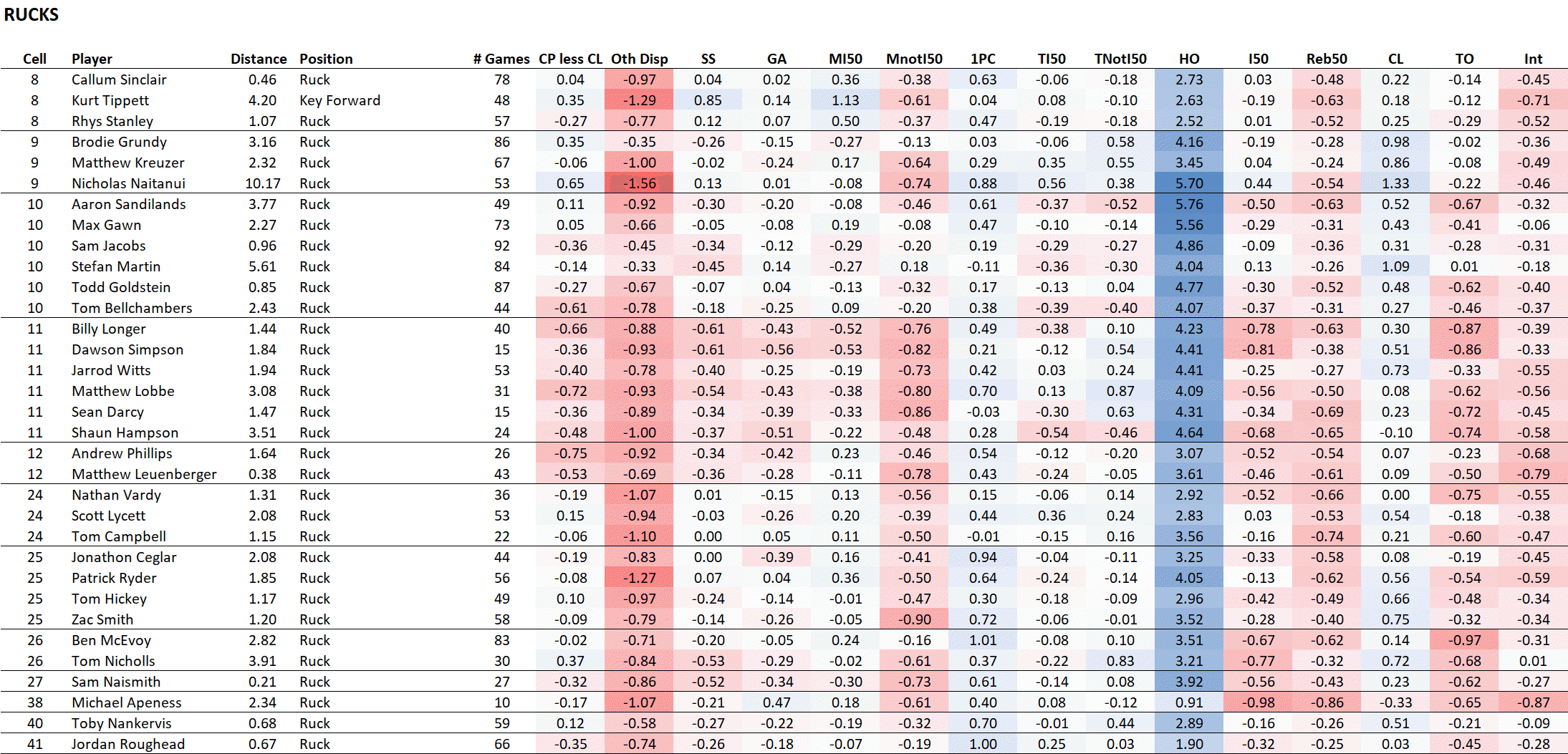Classifying Recent AFL Players by Position: Part 2 (Who's Where?)
/There seems to have been some interest in yesterday’s blog post where we created a self-organising map of current AFL players based on publicly available game statistics, and overlaid the positions to which those players had been assigned on the AFL Player Ratings site.
In that post I discussed the classification of only a handful of players in just a few of the cells. Today I’ll provide the details for all 603 players that were included in the analysis - which cell they were assigned to, and who else was assigned to the same cell. With this data we can answer questions like “which other Key Defenders is Nathan Brown most like?” (in terms of the game statistics he and they produce, on average, in a full game).
The self-organising map we’ll be using today is shown below. It’s the same as the one in yesterday’s blog except for some rearrangement of the cells. Each time you build a self-organising map it creates a slightly different mapping of the underlying data space unless you set the randomising seed before you build it. Yesterday, I didn’t know that …
In the tables that follow, players have generally been recorded under the section heading that matches their AFL-designated position, except in those cases where the self-organising map has placed them in a cell or region mostly occupied by players of a different position type. These players have been recorded under the position type that best matches the map’s view. At the boundaries of regions where cells have equal numbers of players from two or more positions, deciding under which position to record them can be somewhat arbitrary.
Cell 105 is particularly problematic as it contains three AFL-designated Key Forwards but is in a region of Key and Small/Medium Defenders. I’ve included this cell in a Key Forwards table, but you could make a reasonable case to place it under either of the Defender groups instead.
To make the tables a bit more wieldy, I’ve made them all somewhere between about 30 and 50 rows long. All of them can be clicked on to access larger versions.


















